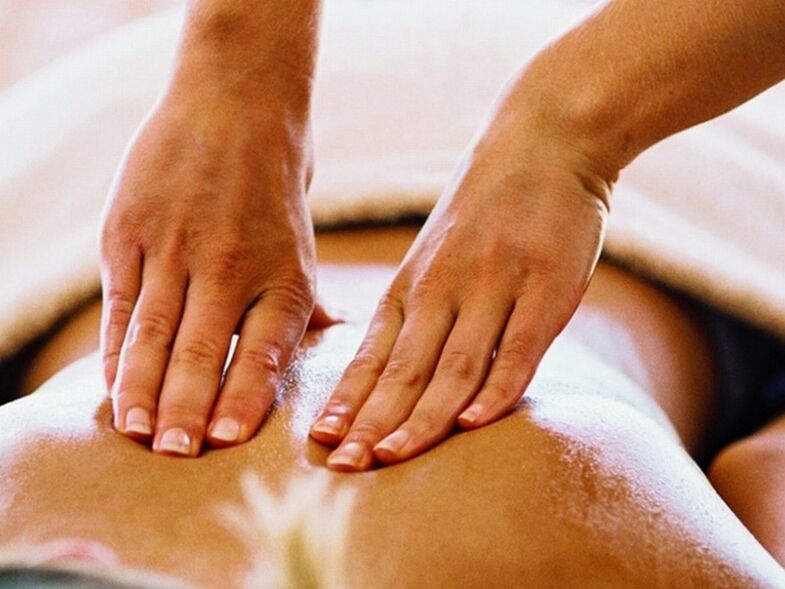Cervical osteochondrosis is a disease in which pain occurs not only in the neck region, but also in the head, shoulder joints, and cerebral circulation. Contrary to the opinion that this disease only affects the elderly, more and more young people are turning to specialists with neck pain. This is about the lifestyle of most people. Computer work, bad posture, slouched, uncomfortable bed, all this is due to the development of cervical osteochondrosis. Home treatment is possible in the initial stages of the disease if you know the cause of its appearance.
Causes and symptoms of cervical osteochondrosis
The main causes of the development of osteochondrosis of the cervical spine:
- Sedentary lifestyle, computer work;
- improper metabolism;
- Accumulation of salts between the vertebrae;
- Unbalanced diet;
- Heredity;
- cervical injuries;
- Improper functioning of hormones.

Before looking at ways to cure neck osteochondrosis, you should know the symptoms of pain in osteochondrosis. To correctly determine the symptoms, it is worth knowing that the vertebral artery, one of the largest vital vessels, passes through the neck region. Through this, the brain is fed with all the necessary substances. The curvature of the intervertebral discs, which at the same time causes a strong feeling of pain, is called osteochondrosis. At first, it is almost impossible to recognize this joint and spinal disease, because this disease develops gradually, and the pain appears at the moment when the space between the vertebrae is compressed to such an extent that the nerve endings of the spine are affected. . This is associated with a violation of cerebral circulation. Only at this moment do the first symptoms appear:
- First of all, pain occurs in the neck area;
- It is often disturbed by dizziness and headache, especially during movement;
- There is weakness in the arms and legs, the coordination of movements is disturbed;
- Ringing, tinnitus can also be a symptom;
- Sudden mood swings;
- Violation of the digestive system and urinary processes in the body.
If you do not consult a specialist in the early stages of the development of osteochondrosis, more serious spinal problems may occur, up to curvature.
Treatment of cervical osteochondrosis
There are several ways to treat cervical osteochondrosis. Each patient suffering from this disease will find the right way to relieve pain, it all depends on how serious the stage of the disease is. For example, dizziness due to osteochondrosis of the neck region can be cured with poultices according to folk recipes. It is important to note that all treatments should be done comprehensively.
Folk remedies
Traditional medicine can effectively relieve symptoms by using the recipes correctly. Well, herbal infusions and decoctions aimed at reducing inflammation help to cope with the disease, here are some of them:
- Concoction. Pour boiling water on the pine needles, let it boil, eat the resulting slurry twice a day or drink an infusion, this will help eliminate the cause of the headache;
- Garlic ginger poultice. Mix equal amounts of garlic and ginger root, add a little butter. The resulting mixture is applied to the affected area. If the ginger is only in flavoring form, you can add a spoonful of powder, the effect will be the same;
- Finely grated potatoes mixed with honeyone by one, put the resulting mass on a cloth for poultice, attach it to the focus of pain and leave it overnight;
- horseradish leafdip it in boiling water, then attach the plant to the neck, water can also be used for poultices.
Don't forget about essential oils and herbs, which in combination with alcohol have an excellent warming effect. Inflammatory processes should disappear within a week after home treatment, if this does not happen, contact a specialist immediately.

Surgery
Surgery is a rather time-consuming and complex process, so this method of treatment is used in the most extreme cases and only when other methods are ineffective.
The decision on the need for surgery is made by the doctor treating osteochondrosis - a neurosurgeon. Only after the diagnosis is made, all tests and examinations are performed, and the patient's cerebral vessels are checked, the preparation for the operation begins. Surgery is often required when the intervertebral disc is destroyed. If possible, it is better to use other methods.
Medical therapy
Treatment with this disease depends on its severity. The main function of the drug is pain relief. Everything depends on the degree of development of the disease, the specialists of health institutions prescribe certain medicines:
- Anti-inflammatory drugs that effectively fight pain and inflammation;
- Corticosteroid medications also help reduce pain;
- Muscle relaxants are great for relieving muscle spasms;
- Anticonvulsants are taken for pain due to the development of neuroticism;
- Warming and anti-inflammatory ointments, gels.

Physiotherapy
In order not to suffer from cervical osteochondrosis and ankylosing spondylitis, the following exercises are recommended:
- Lying on the floor, place one hand on your belly and the other on your chest, inhale and exhale slowly at least ten times. The essence of the exercise is to relax the body;
- This exercise is also performed lying on the ground, but now on the stomach. With your hands in front of you, slowly begin to lift your head, then your torso, tensing your muscles while your hands rest on the floor. So you need to stand for a minute and a half. Run 4 approaches;
- Position - sitting on a chair with a straight back. Tilt your head forward and try to reach your chest with your chin. Then tilt your head back as far as possible. Repeat 15 times.
Exercises are performed very carefully, all movements should be smooth without sudden movements, if some exercises cause discomfort or pain, then you do not need to continue performing them with full force.
Physiotherapy
Physiotherapy allows patients to strengthen neck and back muscles, correct the position of individual vertebrae, and stretch them using special exercises. Working with light weights improves nerve conduction in the spinal canal. The full range of exercises allows for faster recovery.

Massage for cervical osteochondrosis
Massage is good because it can be performed with gentle movements even in the severe stages of the disease, you don't even have to go anywhere, you can always call a specialist to your home. A chiropractor generally adheres to the following principles:
- We do not use force, the movements should be soft and not sharp;
- The movements start from the spine;
- The massage is done with fingers only, without pressure.
Before the massage, apply a special oil to the skin. Some experts resort to cupping because they believe it improves blood circulation. Massage is prescribed both during remission and exacerbation, as it is an excellent prophylactic. One hour of daily sitting is sufficient.

Treatment of osteochondrosis of the cervical spine at home
It is impossible to completely cure osteochondrosis of the cervical spine at home alone. It can only prevent the progression of the disease and stop pain syndromes. This is due to the fact that osteochondrosis is a chronic disease, in some cases exacerbations may occur, it is impossible to get rid of it completely. Therefore, the question of home treatment of cervical osteochondrosis is somewhat imprecise.
Thus, only preventive measures suitable for the recurrence of the disease can be implemented. For this, you need to do exercises regularly, move more, don't sit in one place for a long time, use orthopedic pillows and a mattress. You should avoid stressful situations and give up bad habits.

























